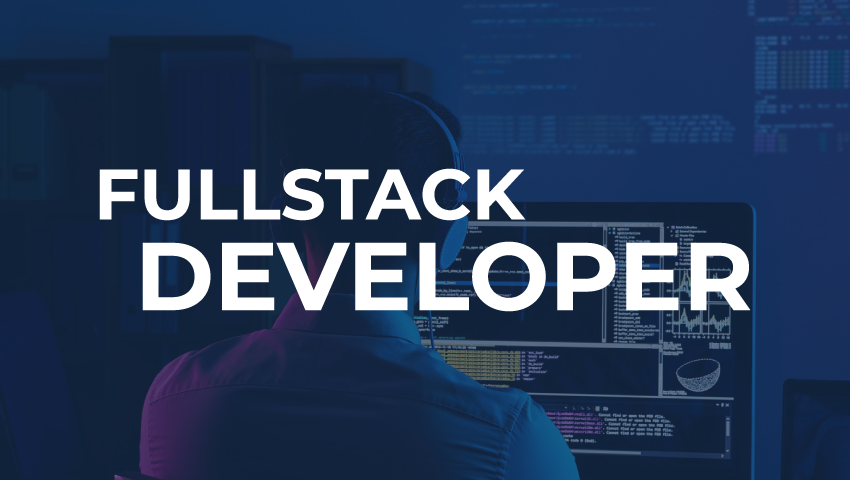Introduction
The creation and upkeep of websites and online apps are part of the dynamic field of web development. With the increasing demand for digital solutions, mastering web development has become a valuable skill for individuals looking to pursue a career in technology. Whether you’re just starting or aiming to become an expert, this guide will take you through the essential stages and skills required to succeed in web development.
1. Understanding Web Development Basics
Before diving into advanced concepts, it’s crucial to grasp the basic structure of web development. Websites and web applications consist of three primary layers:
Frontend (Client-side): This is what users interact with directly. It involves everything users experience visually on a webpage, such as the layout, colors, fonts, buttons, and navigation menus.
Typically, frontend development uses JavaScript, CSS, and HTML.
Backend (Server-side): The backend is responsible for handling the server, database, and application logic. It powers the functionality of the site, such as storing user data, processing requests, and interacting with the server. Languages used in backend development include PHP, Python, Ruby, and Java.
Full Stack: A full-stack developer handles both the frontend and backend, bridging the gap between the two. Full-stack developers are proficient in both the client-side and server-side technologies and can build a complete web application.
2. Getting Started with Frontend Development
Frontend development is where most beginners start their journey. The core technologies in frontend development are:
HTML (Hypertext Markup Language): The skeleton of any webpage.
It outlines the headings, paragraphs, graphics, links, and other components that make up a webpage’s structure and content.
CSS (Cascading Style Sheets): CSS is used to style and format the HTML elements.
Developers can manipulate a website’s responsiveness, colours, fonts, spacing, and layout via CSS.
JavaScript: JavaScript adds interactivity to web pages. It allows developers to implement features such as form validation, dynamic content updates, animations, and more.
Modern online apps and a seamless user experience depend on JavaScript.
Popular Tools for Frontend Development:
Code Editors: Visual Studio Code, Sublime Text, and Atom are popular code editors for frontend development.
Frameworks and Libraries: React.js, Angular, and Vue.js are widely used JavaScript frameworks that simplify the process of building dynamic user interfaces.
3. Diving into Backend Development
Once you’re comfortable with frontend basics, it’s time to explore backend development. Backend developers are responsible for making the website functional and responsive by handling the server-side logic.
Programming Languages: There are several programming languages used for backend development, including:
PHP: Widely used for server-side scripting, especially for building content management systems like WordPress.
Python: A flexible language used in web development with frameworks like Django and Flask, Python is well-known for being easy to understand and simple to use.
Ruby: Ruby on Rails is a popular framework for building web applications quickly and efficiently.
JavaScript (Node.js): JavaScript can also be used for backend development with Node.js, which allows developers to run JavaScript on the server-side.
Databases: A backend developer must also work with databases to store and retrieve data. Databases are of two types:
A full-stack developer needs to understand both frontend and backend technologies, along with concepts like:
RESTful APIs: APIs (Application Programming Interfaces) allow different applications to communicate with each other. REST (Representational State Transfer) is a widely used architectural style for building APIs that connect the frontend and backend.
Version Control: Git is an essential tool for developers to manage and track code changes. GitHub, GitLab, and Bitbucket are popular platforms for hosting and sharing code.
5. Advanced Web Development Concepts
As you progress, it’s important to explore more advanced web development concepts that will enhance your skills and improve the quality of your web applications.
Responsive Web Design: In today’s mobile-first world, it’s essential to create websites that work across different devices and screen sizes. Responsive design uses CSS media queries to adjust the layout based on the user’s screen size, ensuring a seamless experience on smartphones, tablets, and desktops.
Progressive Web Apps (PWAs): PWAs offer a native app-like experience on the web, with features like offline support, push notifications, and faster load times. PWAs use modern web technologies such as service workers and web app manifests.
Web Security: Ensuring the security of your web applications is crucial. Web developers should be familiar with security best practices such as encryption (HTTPS), cross-site scripting (XSS) prevention, SQL injection protection, and user authentication.
DevOps: DevOps is the practice of combining software development and IT operations to improve the deployment pipeline. It involves continuous integration and continuous deployment (CI/CD) practices, ensuring that your code is always up-to-date and properly deployed.
6. Building Your Portfolio and Gaining Experience
To become a proficient web developer, practice is key.
Get involved in open-source projects and start creating your own. A strong portfolio showcasing your work is essential when applying for jobs or freelance opportunities. Some ideas for personal projects include:
Building a personal blog or portfolio website.
Creating an e-commerce site or a task manager application.
Contributing to open-source web development projects on GitHub.
Participating in hackathons and coding competitions can also help you improve your skills and build connections with other developers.
7. Staying Updated with Trends
Web development is a fast-evolving field. To stay ahead, it’s important to keep learning and staying updated with the latest tools, technologies, and best practices.
Here are a few strategies to stay current with trends:
Follow Blogs and Forums: Platforms like Stack Overflow, Reddit’s r/webdev, and dev.to offer valuable insights and discussions on web development.
Conclusion
Mastering web development requires dedication, continuous learning, and hands-on experience. Whether you’re a beginner looking to create your first website or an expert building complex web applications, the journey is both rewarding and exciting. By mastering the essential tools, frameworks, and concepts, you can unlock a wide range of opportunities in the tech industry and beyond. If you’re interested in taking your skills to the next level, a Full Stack Web Developer Course in Noida, Gurgaon, Noida and all cities India could provide you with the knowledge and expertise needed to succeed. Stay curious, keep experimenting, and embrace the ever-changing world of web development.




